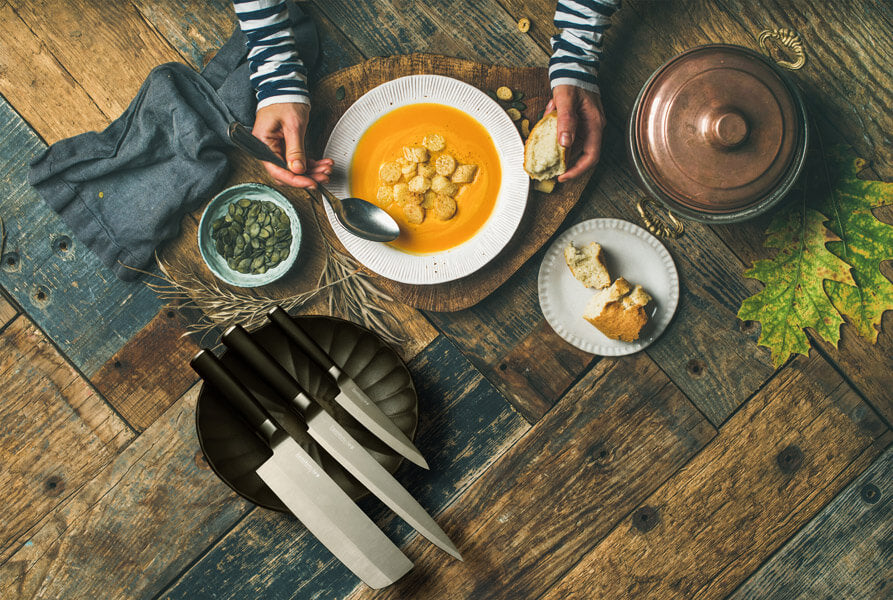
Scandinavian cuisine encompasses the Nordic nations of Denmark, Sweden, Norway, Finland and Iceland. Some of the cuisine’s roots can be traced back to the Viking age and many still feature on tables today in similar forms.
What is Traditional Scandinavian Food?
Traditional Scandinavian cuisine features a variety of simple, yet classic flavor profiles which when combined, produce hearty and satisfying meals.
One highly recognizable characteristic of Scandinavian food is their preference for cooking methods such as preserving, drying, smoking, salting and pickling. These techniques are based on sound reasoning to do with their long, cold winter season. In ancient times, Vikings utilized such methods of cooking to ensure their survival through the cold season. The tradition continues today … just as the weather does!
Popular Scandinavian Ingredients
- Meat: a large variety, including pork, poultry, veal, beef and also wild birds, elk, deer, bear, horse & even whale
- Seafood: both salt & freshwater
- Bread: a proliferation of varieties but most common are rye bread forms
- Fruits & root vegetables: mostly preserved & pickled
- Dairy: cheese & creams as well fermented milk
What is a Smörgåsbord?
One of the most widely known forms of Scandinavian cuisine is the smörgåsbord. They are a very popular lunch option across the Nordic nations but can also be offered at breakfast or dinner time.
At its most basic, a smörgåsbord is a selection of hot and/or cold foods often presented at once for guests to pick and choose as they like. Guests may select foods from a stand-alone table stocked with food – akin to a buffet – or all courses are delivered to the table to be shared family-style. The form depends on the country in which they are served.
What Types of Food Feature in a Smörgåsbord?
Once again, the type of food found in a smörgåsbord differs from country to country. Two examples of differences are below.
Sweden
Can be served in a progressive style, featuring a combination of hot and cold dishes and starting with a course of bread, butter and cheese. Cold fish dishes are usually eaten next, with popular varieties including eel, salmon and herring. Diners then choose from hot meat-based dishes and salads, with dessert served last.
Denmark
A Danish smörgåsbord is made up of open-faced sandwiches. A table is stocked with an array of toppings such as smoked fish, cheese, fresh salad items, boiled potatoes and cured meats. Diners then make up their own sandwich using buttered, rye-bread and fillings of their choice.
Types of smorgasbord food
- Cold meats
- Cheeses
- Boiled eggs
- Smoked, cured or pickled seafood
- Sliced meats (roast beef, chicken, pork etc)
- Meatballs
- Preserves
- Salads
- Soup
- Desserts (cakes, tarts, pancakes, pastries)
Some Lesser Known Scandinavian Dishes
While most Scandinavian dishes boast classic flavor combinations, there are a number that are unique to the cuisine that are worth discovering. The following is a small selection.
What is Palt?
Originating in Sweden, palt is a type of potato dumpling stuffed with meat (usually pork). There are many variations of palt cooked and eaten across the country but the most basic version involves mixing raw potato with flour to create a dough (the raw potato gives the dumplings a gray coloring when cooked). Dumplings are then formed and filled - often with a mixture of bacon and onions – and then boiled until cooked. They are traditionally served on their own with butter and lingonberry jam.
What is Leverpalt?
Leverpalt is a variation on traditional palt whereby minced liver is added to the dough. The method of cooking is the same as normal palt.
What is Kroppkakor?
Kroppkakor are potato dumplings filled with meat, cooked in the same way as palt but using boiled and mashed potato instead of raw. The result is a white dumpling, rather than a gray one. The filling is the same, often pork-based, but it can also feature eel. Again, they are served with butter, cream and jam.
What Is Paltbröd?
Paltbröd is a form of bread enriched with iron thanks to an interesting ingredient – blood. First, tunnbröd (a Swedish form of flatbread) is made using a combination of rye, wheat and yeast with blood added to the dough. It is then baked and the final product can either be crispy or soft. Paltbröd is often eaten with a béchamel-type sauce and fried bacon.
What is Kanelbullar?
Kanelbullar is the Swedish version of a cinnamon bun. It is a sweet, spiced dough twisted into a scroll-type shape and baked. They are very popular across Sweden, most people devouring them whilst enjoying a cup of coffee.
The main difference between an American-style cinnamon bun and a kanelbullar is the former relies on lots of sugar for flavor, while the latter leans towards spice.
To make kanelbullar, a dough is made using hot milk, flour, butter, sugar, salt, ground cardamom and yeast. After it has been left to rise, it is punched down and shaped into rectangles, brushed with butter and then sprinkled with cinnamon and sugar. It is then rolled up and cut into round slices. After being egg-washed and baked, kanelbullar are topped with almonds or pearl sugar.
What is a Rosette Cookie?
Traditionally served at Christmas time, rosette cookies are crisp, thin, deep-fried pastries in the shape of a flower (hence their name). The rosette batter is made by whisking eggs, sugar and milk and is then left to rest. A special iron is needed to make the required shapes. It is carefully dipped into the batter and then plunged directly into very hot oil in two quick successions to create a crisp outer ‘shell’. The rosette is then carefully pried off the iron and fully cooked. They are finished with a sprinkle of sugar and cinnamon.
Though not as much is known about Scandinavian cuisine compared to a range of others, it is hoped this article provided some insights into the broad variety of food on offer throughout these Nordic nations. After all, expanding one’s knowledge base is a masterful way to further a culinary career.


